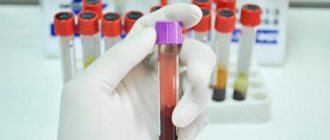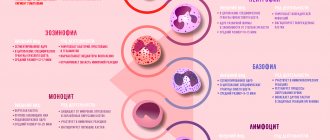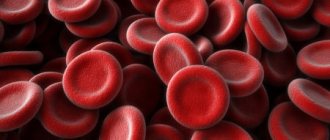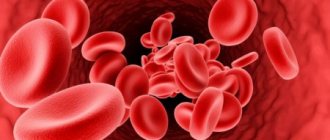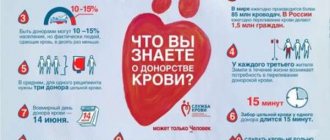0
Author of the article: Marina Dmitrievna
2017.09.15
1 738
Blood analysis
To understand how blood serum differs from plasma, it is worth first considering these concepts in more detail. This will be discussed further in the article.
Serum and plasma
Important! Serology is a science whose purpose is to study plasmatic serum. For example, serum serum is used for cosmetic production purposes. Its plasma properties make the skin soft and tender.
What is blood serum?
Serum is plasma without fibrinogen (the liquid part remaining after blood clotting). It is presented in the form of a yellowish substance (the tint is given by bilirubin). Due to any disturbances in the normal metabolism of pigments, the quantitative concentration of this element will certainly change. And the substance will become transparent.
If you take a serum test from a person who has just eaten, it will be somewhat cloudy. In this case, it contains fats of animal origin. Therefore, doctors recommend donating blood on an empty stomach.
Serum can contain a huge amount of antibodies. And this is quite natural, since it performs an immune function, helping the human body fight infections, parasites, bacteria, fungi and other pathological agents.
The study of serum and blood plasma helps in identifying pathologies that threaten the patient’s health. This biomaterial is used for:
- Biochemical research.
- Blood group test.
- Detection of infectious diseases.
- Determining the effectiveness of vaccination.
The difference between serum and blood plasma is that it is used as a component (or rather a producer) for the manufacture of drugs. Their help is needed in the fight against infectious diseases.
Important! Enzyme immunoassay and immunochemical analysis allows you to diagnose a wide range of infectious diseases, abnormalities in hormone levels (thyrotropin, thyroxine, triiodothyronine) and in the functioning of the immune system.
Receiving materials
The main difference between them is that plasma is always already present in human blood, and serum is obtained in the laboratory, purifying the first material from fibrinogen.
Blood serum differs from blood plasma in the absence of fibrinogen
Plasma is obtained by collecting venous blood. Before the test, the patient is recommended to follow a special low-fat diet and abstain from alcohol, nicotine and certain medications, as these substances can affect the test result. After this, test tubes with the material are placed in special medical preparations - centrifuges, which, through rapid rotation, are able to separate this material from other formed particles.
Serum is obtained from plasma, for which it is placed in special containers and undergoes special processing, which then allows the liquid part to be cleared of formed particles and fibrinogen. This can be done in 2 ways:
- use of calcium ions;
- natural coagulation.
What is plasma?
Plasma is a homogeneous solid liquid of a pale yellow color. It is the liquid part of the blood after all the formed elements (cells) have been removed from it. Plasma is usually clear, but after eating a fatty meal it becomes cloudy. You can see it in its free form, provided that the blood is poured into a test tube and allowed to settle. The formed elements of blood will settle down, plasma will remain on top.
Important! Sometimes the situation is such that only plasma is used for blood transfusion. Most often this happens when the blood type of the donor and recipient does not match.
A plasma fraction may be needed for testing for tumor markers to identify tumor formations and their nature (benign or cancer). This is extremely important in the early diagnosis of certain cancers and in monitoring the effectiveness of treatment.
Functions of blood plasma
The red liquid flowing inside the human body performs many vital functions: saturating tissues with oxygen, regulating body temperature, transporting nutrients to all cells, transporting waste products to places of elimination from the body.
The composition of the red life-bearing fluid in human veins is very rich: it contains formed elements (leukocytes, erythrocytes, platelets) and plasma - the liquid part of the blood. In percentage terms, our red liquid looks like this: 40-45% formed elements, 55-60% plasma liquid.
Plasma is a yellowish liquid that is 90% water, and the remaining 10% from protein components such as albumin, globulin and fibrinogen. The level of albumin and globulin is different for each person; it is this level that is examined in laboratories. Fibrinogen is simply responsible for clotting.
Where can I submit serum for analysis?
In large cities and metropolitan areas, where there are many medical institutions, including laboratories, it is not difficult to provide such research. The Invitro company is very popular; during its work it has established itself as an experienced and professional performer of complex tasks.
There are a lot of branches of the Invitro company. And no one will be surprised that such an establishment is located near your home. Moreover, your family will not even notice your absence, as quickly and professionally as the laboratory assistants will provide everything. The main thing is to properly prepare for the procedure. We will talk more about this later.
During pregnancy, at the Invitro clinic, you can be tested for AFP (alpha-fetoprotein), a protein that is produced in the liver of the embryo. Any excess of it indicates a violation of the normal development of the fetus.
Plasma composition
A significant part of the plasma composition is occupied by water (about 92%). In addition, it contains the following substances:
- glucose;
- proteins;
- amino acids;
- fat and similar substances;
- enzymes;
- hormones;
- minerals.
Albumin is the main protein in plasma, having a small molecular weight. Makes up more than 50% of the total volume of proteins. Formed in the liver.
Obtaining blood serum
To obtain whey, you can use several methods:
- Natural blood clotting.
Obtaining serum in vitro
- Another method is by adding calcium ions to the biomaterial, which implies an artificial coagulation process.
In any case, fibrinogen is activated, resulting in the formation of the desired substance.
In medicine, this procedure is called defibrination (centrifugation). This involves drawing blood from a vein. But to get a reliable result, it is recommended to follow some rules:
- 24 hours before the test, avoid drinking alcohol and do not smoke;
- donate blood strictly on an empty stomach;
- the day before, do not eat fatty, salty, smoked foods, in other words, all dishes that have a detrimental effect on the human body;
- a few days before donating the serum, do not strain the body with significant physical activity;
- be less nervous, receiving negative emotions and stress;
- half a month before taking the tests, stop using any medications (there is no difference in them), including those against parasitic diseases. But if this is not possible, you need to tell the laboratory assistant about it.
Table of proper preparation for taking a blood and urine test.
Practice shows that most people understand what a blood test is, but serum is something incomprehensible to them. And they view this blood substance solely as a component for research, nothing more.
Where do you donate serum and plasma and why?
Both materials are obtained from a human vein, so they need to be submitted only to special laboratories that have the necessary equipment for extraction.
Plasma donation differs from regular venous blood donation in that after separation of the yellow biomaterial by centrifugation, the remaining biomaterial is returned back to the patient, which makes the process less traumatic for the body than regular donation.
In addition to the main medical and therapeutic areas, yellow liquid is widely used in non-medicinal areas: cosmetology, dentistry.
Rules for collecting venous biomaterial from a patient:
- It is important to exclude smoking, alcohol, and fatty foods for several days before taking the test. On the day of collection you cannot eat at all.
- The patient must sit during collection, with the exception of seriously ill patients - they can remain in a supine position.
- biological material is taken from the patient only after a 15-minute rest.
Do you know?
How to take a blood test for serum iron?
Serum iron testing is performed for:
- assessment of microelement reserves in the body;
- diagnosis of anemia and the state of intoxication with a substance, when it is absorbed and deposited in excess;
- assessing the effectiveness of the treatment.
The referral is issued by a pediatrician, general practitioner, gastroenterologist, hematologist, gynecologist or surgeon for:
- detection of a low level of hemoglobin or red blood cells in a patient in a clinical blood test;
- pregnancy (this analysis is included in a set of standard studies);
- observing symptoms of iron deficiency anemia (weakness, dizziness, chronic fatigue, constant drowsiness, yellowish skin color, dry skin, brittle nails, etc.) or signs of microelement intoxication;
- the need to assess the effectiveness of therapy for excess or deficiency of iron in the blood.
Patients wonder: how is iron indicated in a blood test? The referral form may indicate: serum iron, iron, iron ions, serumiron, serumFe, iron, Fe. The designations are equivalent and their meaning is identical.
Preparing the patient for analysis is one of the most important factors that determines the final accuracy of the results obtained. You should donate blood for testing after an 8-hour fast for adults. Children are allowed to reduce the time period to 4 hours.
You should give up alcoholic beverages and medications one day before, having previously agreed with your doctor. Half an hour before taking biomaterial, smoking is not allowed.
For the study, venous blood is taken from a vein in the elbow. Why should you not take capillary blood? The biochemical composition of venous blood is more stable than capillary blood. Therefore, the data obtained will be more reliable.
The amount of a microelement can vary throughout the day. Iron in the blood reaches its peak values in the morning, and its minimum concentrations in the evening.
What influences the indicator?
It is important to consider that iron in the blood serum under study can increase significantly due to taking even 1 tablet with this microelement. Hormonal drugs, including oral contraceptives, also affect the indicator.
Antibacterial drugs, vitamins and drugs for the treatment of diabetes mellitus can change the content of the substance in the body. Biological supplements may cause false-positive results and should be discontinued prior to testing.
It should be borne in mind that during menstrual bleeding, the level of iron in a woman’s blood decreases slightly. What can cause false negative laboratory test data?
The indicator is influenced by the patient’s lifestyle. Prolonged lack of sleep and emotional or physical stress lead to depletion of micronutrient reserves. As a result, indicators may be recorded below normal.
Applying a tourniquet for too long causes hemolysis of the collected biomaterial in a test tube. Red blood cells disintegrate, and iron, along with heme, enters the plasma. Signs of hemolysis are darkening of the blood in the test tube. In this case, it is strictly prohibited to conduct research. Re-sampling of biomaterial is required.
What is blood serum?
This is a yellowish liquid separated from the blood clot. Its specific color indicates the presence of bile pigment - bilirubin. It is used for biochemical analyses, research for the presence of various types of infectious diseases, and for assessing the effectiveness of vaccination. Serum from a person or animal immunized with a specific antigen can become an immune serum used to diagnose and treat a number of diseases. It is also used to determine blood type. For clinical practices, fresh or previously frozen blood serum is used.
Storing blood, plasma or serum samples
In most cases, it is considered acceptable to use material stored at room temperature for no more than 8 hours for analysis. When samples are cooled to a temperature of +4°C, they can be kept for a week. If biological material is subject to long-term storage, then it must be deep frozen to a temperature of -20°C. This will allow analysis for cancer markers, cholesterol, urea, and many hormones even after several months.
Return to list
Studying the properties of serum
Depending on the environment where proteins are analyzed using a method such as electrophoresis, they can acquire a negative or positive charge. That is, the environment in which electrophoresis is carried out depends on the movement of proteins, plus their immediate characteristics: weight, size, charge, shape. Negatively charged molecules are poorly adsorbed, unlike positively charged particles. As a result, protein electrophoresis is directed towards negative charges. The study is prescribed in the following cases:
- very high ROE;
- if the level of total protein in the blood is elevated;
- complete control of monoclonal gammopathies;
- high value of gamma globulins.
In a number of complex pathological cases, electrophoresis is not prescribed, since the doctor may ask the patient to undergo analysis of a single protein. Electrophoresis was first used as a method for determining blood plasma proteins in 1930 by the Swedish scientist Tiselius.
If the decoding of the analysis showed that the serum is oversaturated with triglycerides (microparticles of fat), doctors interpret this deviation as lipemia. Between themselves they use the colloquial form - chylous blood. It is not suitable for study, since after processing in a centrifuge it becomes very thick and acquires a white tint. Chylous blood can be a direct consequence of the development of pathologies, the most dangerous of which is diabetes mellitus.
Also, a high concentration of triglycerides is a sign of obesity and excessive consumption of alcoholic beverages. Chylous blood occurs in patients whose analysis showed ascites, cirrhosis, and renal failure. Along with these reasons, blood chylosis occurs due to the use of certain medications, such as β-blockers, corticosteroids, diuretics.
How does BLOOD SERUM differ from PLASMA?
The cells of our body are washed by a certain amount of bodily fluids, or humors. Due to the fact that these fluids occupy an intermediate position between human cells and the external environment, they ensure the survival of cells and play the role of a so-called shock absorber during sudden external changes, in addition, they are an effective means of transporting nutrients and waste products in the body.
An important role in the human metabolic process is played by blood, which consists of the liquid part of blood plasma and formed elements suspended in it:
- leukocytes - white blood cells that perform protective functions;
- erythrocytes - red blood cells containing hemoglobin (red respiratory pigment);
- platelets - blood platelets necessary for blood clotting.
Formed elements make up 40–45%, plasma – 55–60% of the total blood volume. This ratio is called the hematocrit ratio, or hematocrit number. In some cases, the hematocrit number includes only the volume of blood that accounts for the formed elements.
Blood plasma is a solution that consists of:
- water (90-92%) and dry residue (10-8%);
- organic and inorganic substances;
- formed elements (blood cells and plates);
- dissolved substances: proteins (albumin, globulins and fibrinogen); inorganic salts that are dissolved in the form of anions (sulfate, chlorine ions, phosphate, bicarbonate) and cations (potassium, magnesium, sodium and calcium); transport substances derived from digestion (amino acids, glucose) or respiration (oxygen and nitrogen), metabolic products (urea, carbon dioxide, uric acid) or substances absorbed by the lungs, skin and mucous membranes.
Plasma constantly contains all microelements, vitamins and intermediate metabolic products (pyruvic and lactic acids).
Lymph, blood, tissue, pleural, spinal, joint and other fluids form the internal environment of the human body. They originate from blood plasma and are formed through the process of plasma filtration by passing through the capillary vessels of the human circulatory system.
Plasma protein contains fibrinogen, which appears due to changes in the physicochemical state during blood clotting. Fibrinogen has the ability to pass from a soluble to an insoluble form, converting into fibrin and forming a clot.
Blood serum is a clear, yellowish (or light yellow) liquid separated from a blood clot after blood has coagulated outside a living body. From the blood serum of animals and people immunized with certain antigens, it is possible to obtain immune sera used in the diagnosis, treatment and prevention of various diseases.
The serum can be either red due to hemolysis - this is the process of destruction of red blood cells with the release of hemoglobin into the environment surrounding the red blood cells, or icteric - due to increased values of bilirubin (a pigment that is contained in the blood and excreted with bile, due to which it is called bile pigment).
Blood serum is used for preventive, diagnostic or therapeutic purposes. To obtain it, it is necessary to place sterilely collected blood in a thermostat for 30–60 minutes, remove the clot from the wall of the test tube with a Pasteur pipette and place it in the refrigerator for several hours (preferably for a day). The settled blood serum is aspirated or drained using a sterile Pasteur pipette into a sterile test tube.
Conclusions:
- Blood plasma is the liquid part of the blood that remains after the removal of formed elements. In a suspended state, it contains formed elements - blood cells and platelets (or blood cells).
- Blood plasma in its composition is a very complex liquid biological medium, which includes vitamins, carbohydrates, proteins, various salts, lipids, hormones, dissolved gases and intermediate metabolic products.
- Blood serum (or blood serum) is the liquid fraction of clotted blood.
- Blood plasma is obtained by precipitation of formed elements, and serum is obtained by introducing coagulants (substances that promote blood clotting) into the blood plasma.
- Blood serum differs from plasma in the absence of a number of proteins of the coagulation system, such as fibrinogen and antihemophilic globulin, therefore it does not coagulate in the presence of coagulase, incl. microbial
